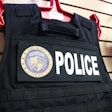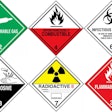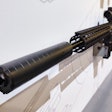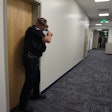If patience is the virtue by which police are going to be evaluated in the hereafter, I fear for their celestial well-being. Some cops are in such a rush to get a car stopped that they'll let the driver they're attempting to detain dictate where the traffic stop will take place. Worse, they'll allow suspects to choreograph what happens once the cars have stopped.
Bad Location
Given the opportunity, suspects will lead you as far off the beaten path as possible, or at least to a location that provides them a situational advantage.
Example: A day shift deputy finds a vehicle's driver taking an inordinate amount of time to pull over, and when he does, it's beneath a darkened overpass. It occurs to the deputy that perhaps the vehicle's occupants are angling to get him in an area that will offer few witnesses to whatever surprise they have planned for him. He elects to wait for backup and have the people exit the car, rather than approach the vehicle himself. After the men are successfully detained away from the vehicle, a search of it finds a number of firearms inside.
Remember: You pick when and where they're going to stop. If they don't stop until your vehicle and theirs are in a relatively isolated area, don't approach the car until you have sufficient backup on scene. The driver can pitch a bitch about the imposition all he wants, but has nobody to blame but himself.
If you do find yourself in such a situation, you're probably going to have some time waiting. Make repeated commands over the P.A. to get the driver to do what you want him to do. And if you suspect something bad is in the air, tape these commands. Such evidence can go far to display both your attempts to get compliance and their refusals.
And things can go south in a hurry. Watch those telltale brake lights. More than one suspect has put a car into reverse and hit the gas with the intention of activating the officer's airbags.
The Approach
If you do make the approach, make sure whatever ambient lighting there is works for you, and not against you. Don't cross in front of your headlights or spotlamps at night.
Regardless of which side of the vehicle you approach, you want to minimize the threat of your getting struck by a passing vehicle. Take full advantage of the road shoulder by getting at least the vehicle you're stopping as far to the right as possible.
Vulnerability
Another thing to watch for on traffic stops: Leaving yourself or your patrol car vulnerable.
One Pasadena, Calif., police officer attempted to stop a driver who suddenly abandoned the car on foot. The officer likewise left his patrol car to go in foot pursuit of the suspect, who circled a nearby house and returned to the officer's patrol car which he then stole. The theft of a patrol car carries with it the collateral threat of a suspect arming himself with a shotgun or AR-15 stored inside the vehicle.
One practice that can go a long way toward preventing such problems is not leaving your car keys in the patrol car in the first place. Many officers do so in anticipation of having to suddenly jump back in the car should the driver take off. Unfortunately, for many officers—particularly those in major metropolitan police departments—any ensuing pursuit will probably be cancelled by the watch commander, anyway. Overall, I don't see how the relative worth of leaving keys in the car with the ignition running is worth the risk of your detainee or someone else hopping in the ride and taking off with it.
Traffic stops are inherently dangerous. Let's try to do everything possible to keep them from becoming more so.














